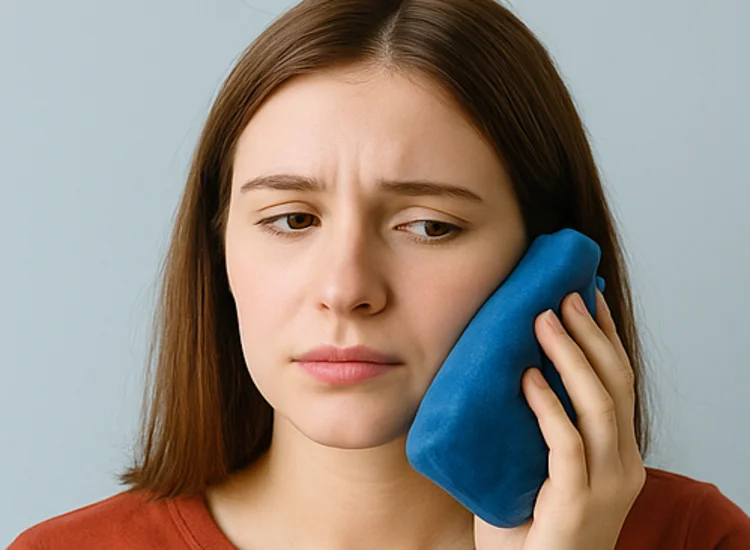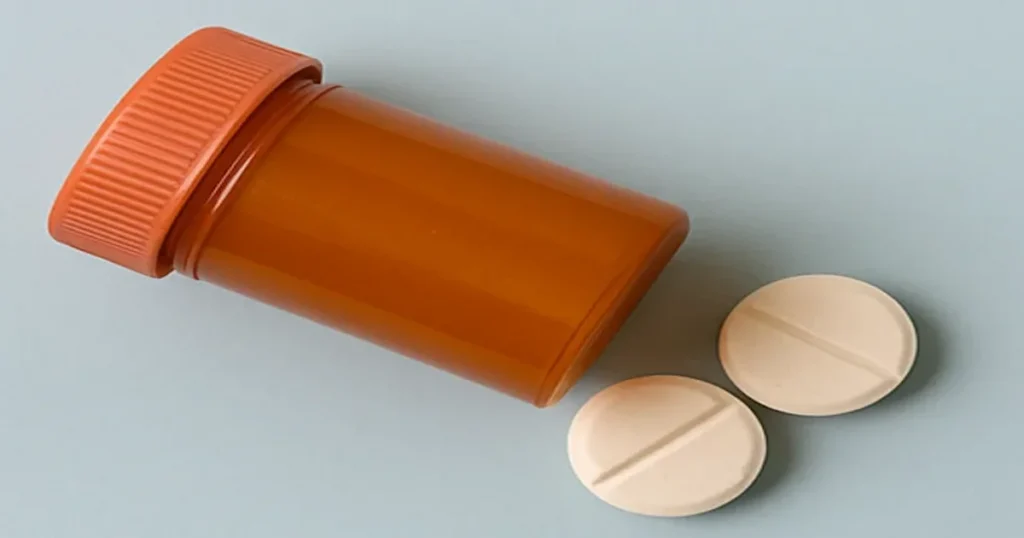Immediate self-care before dental emergency can make the difference between saving and losing a tooth. Acting quickly not only reduces pain but also improves the success of treatment once you arrive at the clinic.
This guide outlines practical steps you can take before reaching an emergency dentist, from controlling bleeding and preserving a knocked-out tooth to preparing important information for your visit.
Assessing the Situation: Is It Truly an Emergency?
Not every dental issue qualifies as an emergency. Mild sensitivity to cold drinks or minor gum irritation can usually be addressed during a scheduled appointment. However, symptoms like severe tooth pain, uncontrolled bleeding, significant swelling, or visible trauma to teeth and gums demand immediate care.
If you’re unsure, it’s safer to treat the situation as an emergency until proven otherwise. Contacting our emergency dental care team allows us to guide you over the phone and determine whether you need urgent same-day treatment or a regular follow-up appointment. Remember: waiting too long can allow a minor problem to escalate into a serious one.

Control Bleeding
Here are the most important factors that you have to know in order to control bleeding before dental emergency:
Why Bleeding Happens
Bleeding after trauma, tooth loss, or gum disease occurs when blood vessels in the gums or surrounding tissue are damaged. Sometimes bleeding looks worse than it is because saliva mixes with blood, but persistent bleeding beyond 15–20 minutes is a true red flag.
First Steps for Control
Use a clean gauze pad or a damp tea bag, applying firm but gentle pressure to the site. Bite down steadily for at least 10–15 minutes without removing the gauze, as frequent checking can cause the bleeding to restart.
When to Seek Help Immediately
If bleeding continues despite repeated pressure, or if it’s accompanied by dizziness, weakness, or large blood clots, go directly to the hospital ER. General dentistry and periodontics services can identify and treat the underlying cause.
Pain Management
Dental pain can be severe, often radiating to the ear, jaw, or head. Before your appointment, consider taking over-the-counter medications such as ibuprofen or acetaminophen to help reduce discomfort. Avoid aspirin, especially if you have bleeding, as it can thin the blood and exacerbate the bleeding.
A cold compress applied to the outside of your cheek in 15-minute intervals helps reduce swelling and numbs the area. Unlike heat, which can spread infection, cold therapy minimizes inflammation. While these methods provide temporary relief, they do not resolve the root cause, which may require a root canal treatment or other urgent procedure.
Preserving a Knocked-Out Tooth
A knocked-out tooth is one of the most time-sensitive dental emergencies. The survival of the tooth depends on how it’s handled and how quickly it’s reimplanted. Always pick it up by the crown, the white chewing surface, and never touch the root, as delicate cells there are crucial for reattachment.
If the tooth is dirty, rinse it gently with saline or milk, but never scrub. Ideally, place the tooth back into its socket and hold it in place with gentle pressure. If this isn’t possible, keep it moist in milk, saline, or your own saliva. The sooner you reach an emergency dentist, the greater the chance of saving the tooth. If re-implantation fails, restorative options such as dental implants or dental bridges can restore your smile.

Avoiding Certain Actions
When people panic during a dental emergency, they often take steps they believe will help, but these actions can actually reduce the chances of saving a tooth. Avoid the following mistakes:
- Don’t scrub the tooth root: the delicate cells on the root are essential for reattachment. Scrubbing destroys them.
- Don’t dry out the tooth: keeping it moist is critical. Use milk, saline solution, or saliva instead.
- Don’t disinfect with alcohol or peroxide: these chemicals kill living tissues and reduce survival chances for the tooth.
- Don’t delay treatment: pain may temporarily fade, but underlying infection or trauma can worsen quickly.
- Avoid DIY fixes: refrain from gluing or taping broken fragments, as this can complicate professional care.
Every minute matters. Immediate professional care gives your dentist the best chance to save the tooth, prevent infection, and avoid more invasive procedures such as extractions or surgery.
Have Questions or Need Advice?
Fill out the form below and we’ll contact you for a quick consultation.
Handling Swelling or Infection Signs
Swelling in the gums, face, or jaw often indicates infection. Apply a cold compress to the outside of your cheek to reduce inflammation, and keep your head elevated to minimize pressure in the area. Never apply heat, as it can accelerate the spread of infection.
If swelling is accompanied by fever, a foul taste in the mouth, or difficulty breathing, this is a more advanced sign of a dental abscess. Such cases may require both antibiotics and urgent procedures to remove the source of infection.
Here is what Mayo Clinic says:
Emergency room providers can give you medications, such as antibiotics or pain relievers, to alleviate pain and swelling. But they don’t perform restorative treatments, such as fillings or crowns. Once you receive dental emergency care at the ER, you’ll still need to see your dentist as soon as they’re back in their office.
What Information to Prepare for the Dentist
Bringing the right details with you during a dental emergency can speed up diagnosis and treatment. The more accurate the information, the faster your dentist can choose the safest and most effective care plan.
| Information Needed | Why It Matters | Examples to Bring |
|---|---|---|
| Medical history | Ensures treatment is safe and tailored to your health | Diabetes, heart disease, and high blood pressure |
| Current medications | Prevents dangerous interactions with anesthesia or antibiotics | Blood thinners, painkillers, antibiotics, and insulin |
| Allergies | Helps avoid allergic reactions to drugs or materials | Penicillin, latex, and anesthetics |
| Timeline of the incident | Guides urgency of care and treatment decisions | The tooth was knocked out 45 minutes ago |
| Symptoms and duration | Helps identify severity and underlying cause | Severe toothache for 2 days, swelling for 12 hours |
| Self-care measures taken | Tells the dentist what has already been tried | Used gauze for bleeding, applied a cold compress, and took ibuprofen |
| Emergency contact | Provides support if sedation or hospital referral is needed | Phone number of a family member or friend |
Tip: Keeping this information written down (on your phone or a card in your wallet) can save time in stressful situations and help your dentist act quickly.
Transport Considerations
Dental emergencies often leave patients in pain, disoriented, or medicated. Driving in this state increases the risk of accidents, which can exacerbate an already serious situation. Safe transportation is just as important as urgent dental treatment.
1. Avoid driving if you’re in pain or medicated
Severe toothaches, dizziness, or the effects of painkillers can slow your reaction time and impair judgment. If you’ve taken any medication or feel lightheaded, do not attempt to drive yourself.
2. Arrange a ride from someone you trust
Call a family member, friend, or neighbor to drive you to the clinic. If no one is available, use a rideshare service or taxi. Having someone accompany you ensures you get safely to the dentist without worrying about transportation.
3. Take special precautions for children and elderly patients
Children should always be transported in a car seat for their safety, even in emergency situations. Elderly patients or those with mobility issues may require extra support, such as a wheelchair or walking aid. Making these arrangements ahead of time reduces stress during the emergency.
4. Know when to go directly to the hospital ER
If your emergency involves uncontrolled bleeding, facial trauma, breathing difficulties, or suspected fractures, it’s safer to go straight to the ER. Once stabilized, you can follow up with our emergency dental care team for comprehensive treatment.
5. Prepare for a smoother arrival
Bring your ID, insurance information, medical history, and a list of medications. This preparation allows your dentist to act quickly and avoid delays in care. Keeping a small “emergency kit” in your car, including gauze, saline solution, and an ice pack, can also be helpful.
Safe transport ensures you arrive ready to receive treatment without exposing yourself or others to unnecessary risks on the road.
Do you need emergency dental care right now?
Call Toothwizard in Scarborough to book an appointment online. We are ready to offer the best expert care.
Fast Action Improves Dental Outcomes Before Dental Emergency
What you do before reaching an emergency dentist can directly affect the outcome of your treatment. Controlling bleeding, managing pain, preserving teeth, and avoiding harmful mistakes all improve the likelihood of saving your natural teeth and preventing long-term complications.
If you’re in Scarborough and experiencing a dental emergency, contact Lawrence Dental Centre immediately. We provide same-day emergency appointments to relieve pain, stop infection, and protect your oral health.
FAQ
Patients often wonder which actions they should take at home and which should be left to professionals. Here are straightforward answers to the most common questions:
What should I do for a knocked-out tooth before the dentist?
Pick it up by the crown, rinse gently if dirty, and store it in milk or saline solution. Do not touch the root. Visit a dentist within one hour.
Can I take painkillers before an emergency dental visit?
Yes. Ibuprofen or acetaminophen are safe options for most patients. Inform your dentist about what you’ve taken before treatment begins.
Should I rinse my mouth before treatment?
Yes, gently rinse the area with warm salt water to clean it. Avoid vigorous rinsing or spitting, as this can disrupt the formation of clots and worsen bleeding.
How do I control swelling quickly?
Apply a cold compress to the outside of your cheek in 15-minute intervals. Keep your head elevated, especially when resting, to limit pressure in the affected area.
Have you ever faced a dental emergency where quick self-care made a difference?
Share your experience below
Your story may help others take the right steps before reaching a dentist.
Have Questions or Need Advice?
Fill out the form below and we’ll contact you for a quick consultation.

